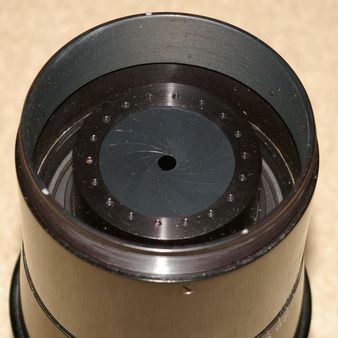One of the available semi-automated settings in most modern cameras is the Aperture or Diaphragm priority. In most cameras, this setting is indicated by an "A" letter, but there are some exceptions - Canon, for example, indicates "Av" (from Aperture Value).
This setting fixes the opening of the diaphragm when taking a picture. This is a circular curtain that allows for the flow of more or less light to the camera sensor; their values refer to the fraction of light, which is allowed to go through, with 1:1 as reference from an ideal lens. The camera itself will calculate automatically the needed exposition time for a "right" photo capture.
Traditional setting values in film caperas were
1 - 1.4 - 2 - 2.8 - 4 - 5.6 - 8 - 11 - 16 - 22...
Nowadays, with the available electronic control we may also find intermediate values. Always remember, lower values allow for more light.
Basics
From above indications, we have some clear conclusions:
- If we close the diaphragm (higher values), we ill need a longer exposition for a give picture, and vice-versa.
- For low-ligth photography, aperture has to be defined at low values (bigger opening). With high lights, smaller aperture values (higher number) will be recommended.
The very fact of putting some obstacle (the diaphargm) to the light flow has some physical effects in the way the light is transmitted through the lens:
- Smaller apertures (high value) will produce sharper images, with focused areas in front and behind the main subject. This is the best option for landscape photography, for example. As a drawback, longer exposure times are needed, so that a tripod may be required.
- Bigger apertures (small numbers...) will only get a small range in focus. Foreground and background objects will appear bllurred, thus "separated" from the main object. This is a best chooice for portrait photography...



The Sony DSCW830 is a budget-friendly and one of the best cameras for amateur photographers. This point and shoot camera comes with a 20.1-megapixel sensor and a Zeiss lens (8x optical zoom).
ResponderEliminar